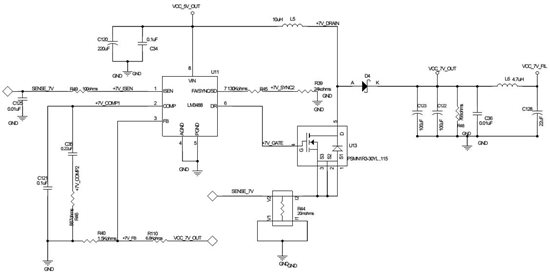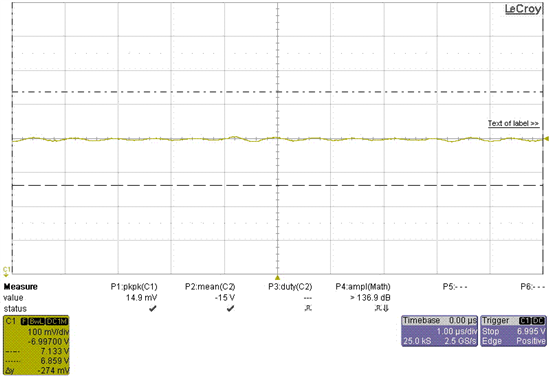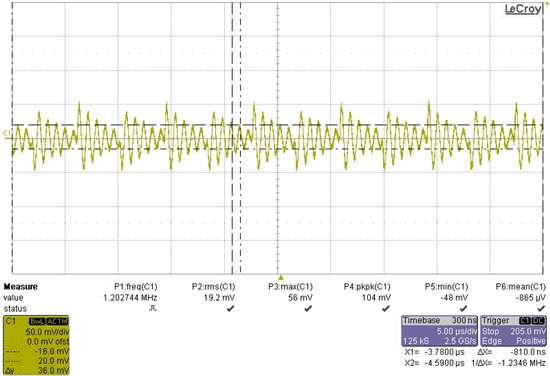Hi,
I am using LM3488 in boost configuration for generating 7V from 5V.
I have implemented the schematic from the WEBENCH Design Report.
During testing a 50Hz oscillation with 300mV peak to peak voltage is observed in the 7V output with 10mA minimum load.
When the load increased to 30mA, the output becomes stable with ripple less than 50mV.
The schematics of the circuit is also attached.
Is there any solution available to reduce ripple with 10mA or less load.





